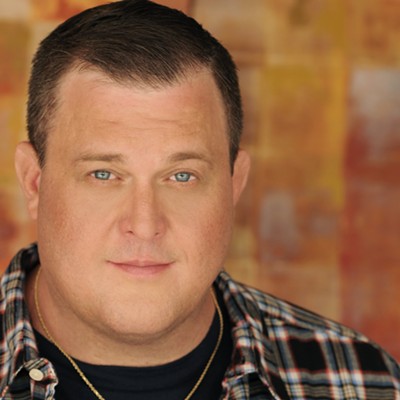Monday, April 4, 2011
Curator of Censored-Video Exhibit Rips Museum-World Homophobia
In December, the Smithsonian Institution caved to right-wing political pressure and withdrew artist David Wojnarowicz's 1986-87 video "A Fire in My Belly" from an exhibit at the National Portrait Gallery. In response, regional museums in Pittsburgh and elsewhere hosted screenings of the video, which includes sequences depicting ants crawling over a crucified plastic Jesus.
But if you saw these screenings as a simple act of art-world solidarity, Jonathan Katz says you're missing the point.
Katz co-curated Hide/Seek: Difference and Desire in American Portraiture, the exhibit that included "Fire in My Belly." It was the first major museum exploration of how same-sex desire has influenced American portraiture. (Wojnarowicz, who was gay, died from AIDS in 1992.)
Sure, said Katz in a recent phone interview with CP, it's great that the show and the video drew additional eyeballs thanks to the controversy. But Katz, an art scholar and activist who directs the visual-studies doctoral program at SUNY Buffalo, sees a bigger problem. The Wojnarowicz episode and its fallout, he says, provided "perfect cover for longstanding and deep-rooted homophobia that still pervades the American museum world."
Katz, who's been outspoken about the controversy, visits Carnegie Mellon University on Wed., April 6, to participate in a panel discussion about it.
Don't get him wrong: Katz says that it was "incredibly stupid" for the Smithsonian to remove "Fire in my Belly" after conservative activists like William Donohue, and Republican politicians like then-incoming Speaker of the House John Boehner, called it offensive to Christians.
But in Katz's view, the larger context is that American museums are "the last remaining bastion of implicit and explicit homophobia in the American cultural sphere." The fact that some of them showed "Fire in My Belly" doesn't change what he calls a two-decade-long "blacklist" on LGBT lives and work.
Katz says this blacklist started in 1989, when a campaign by Sen. Jesse Helms ended with the cancelation of a show by photographer Robert Mapplethorpe at Washington, D.C.'s Corcoran Gallery of Art. Helms, Katz says, equated gay artists, AIDS and threats to American youth; the Christian right, emboldened, has helped cow the art world ever since: "People decided they just weren't going to address sexuality."
Katz notes that it took a publicly funded museum, the National Portait Gallery, to break this silence. He says that private institutions, though hypothetically freer, are in practice in thrall to their boards of directors -- comprised of wealthy folks who tend to favor the status quo.
Is all this true in Pittsburgh, too? After all, we're home to the world's biggest single-artist museum -- The Andy Warhol Museum, honoring an artist who was gay. And the Carnegie Museums (parent institution to the Warhol) are currently exhibiting Paul Thek: Diver, a major retrospective of work by a gay artist.
Katz draws a distinction. The blacklist he alleges doesn't rule out showcasing artists who are gay, or noting their sexuality. Rather, it applies to shows that thematically focus on the sexuality of artists, the way other themed shows might explore women artists, or 19th-century French landscape painting.
Katz says the Wojnarowicz controversy can be tricky to discuss.
"[W]e have to resist the framing of this as a religious issue," Katz recently told the blog Modern Art Notes. "It's naked politics. It's power politics. It's not even really in some sense a homophobia issue. It's about consolidation of conservative power in many instances. It's attempting to dictate a new American polity."
The April 6 panel discussion, including a screening of "A Fire in My Belly," also features experts including Richard Howells, reader in cultural and creative industries at King's College London; David Dombrosky, head of CMU's Center for Arts Management and Technology; and Andreea Deciu Ritivoi, associate professor of English at CMU.
The events takes place at 4:30 p.m. Wed., April 6, in the Adamson Wing (Baker Hall 136), on CMU's Oakland campus.
Tags: Program Notes













